Lessons the bike industry should - and should not - take from the Model B e-bike
The new e-bike/moped hybrid designed by Kendall Toerner could offer the bike industry a few lessons in style - but we're not sure about that saddle angle
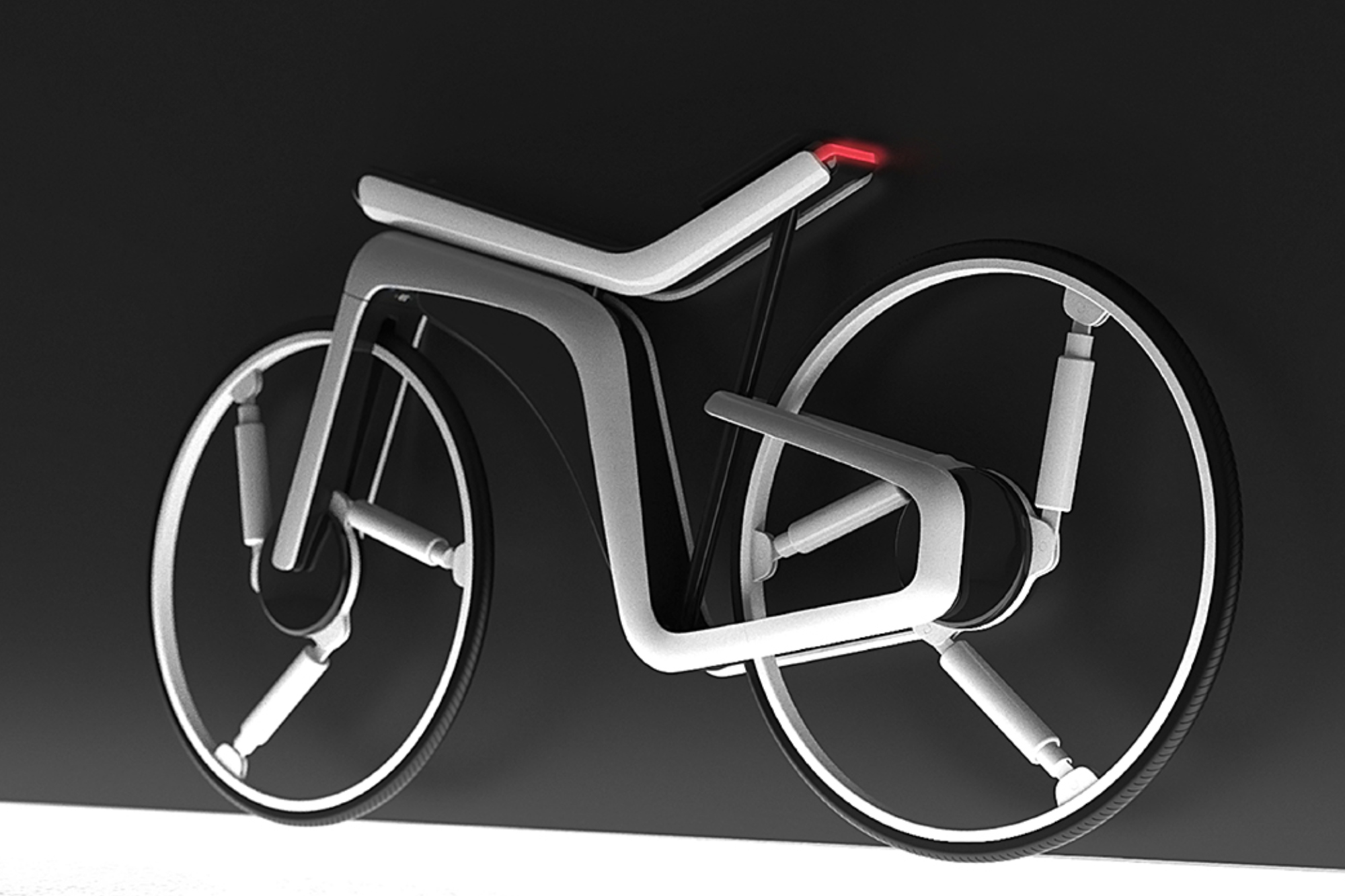

If there's one thing we can all agree on, it's that Model B e-bike concept turns heads.
The machine is the brainchild of designer Kendall Toerner. He doesn't work for Tesla, and his work is headed 'Personal Project', though he includes Tesla logos and the name throughout his presentation around the bike.
Since the bike doesn't require physical input from the rider, we can comfortably disagree that 'bike' is the most fitting title. However, this bike/moped hybrid does carry some interesting learnings alongside a few technologies we'd rather leave in the automotive world.
To begin the design process, Toerner looked first at the detracting factors preventing people from cycling, and then at the benefits of both driving and cycling. He concluded that the design should offer the environmental benefits of cycling, also combining the easy parking, low traffic and low cost with the ability to travel long distances, avoid physical effort, be 'relatively safe' and enjoy the 'status symbol' of the car.
Providing a low-cost status symbol appears to be a quandary in itself (especially when the status symbol is represented in the brief by a $ sign), but we'll roll with it. We can also assume that the bike is not pitched at the new and returning riders specifically seeking out cycling for its benefits to health and fitness.
The resultant concept offers the ability to ride on 'autopilot' thanks to independent steering. The bike handles itself.
Forward, side, and rear-facing radars, cameras and ultrasonic sensors provide a 360° assessment of all that's going on around the bike, then the fold-out handlebars turn independently based upon a combination of force exerted by the rider and input from the sensors.
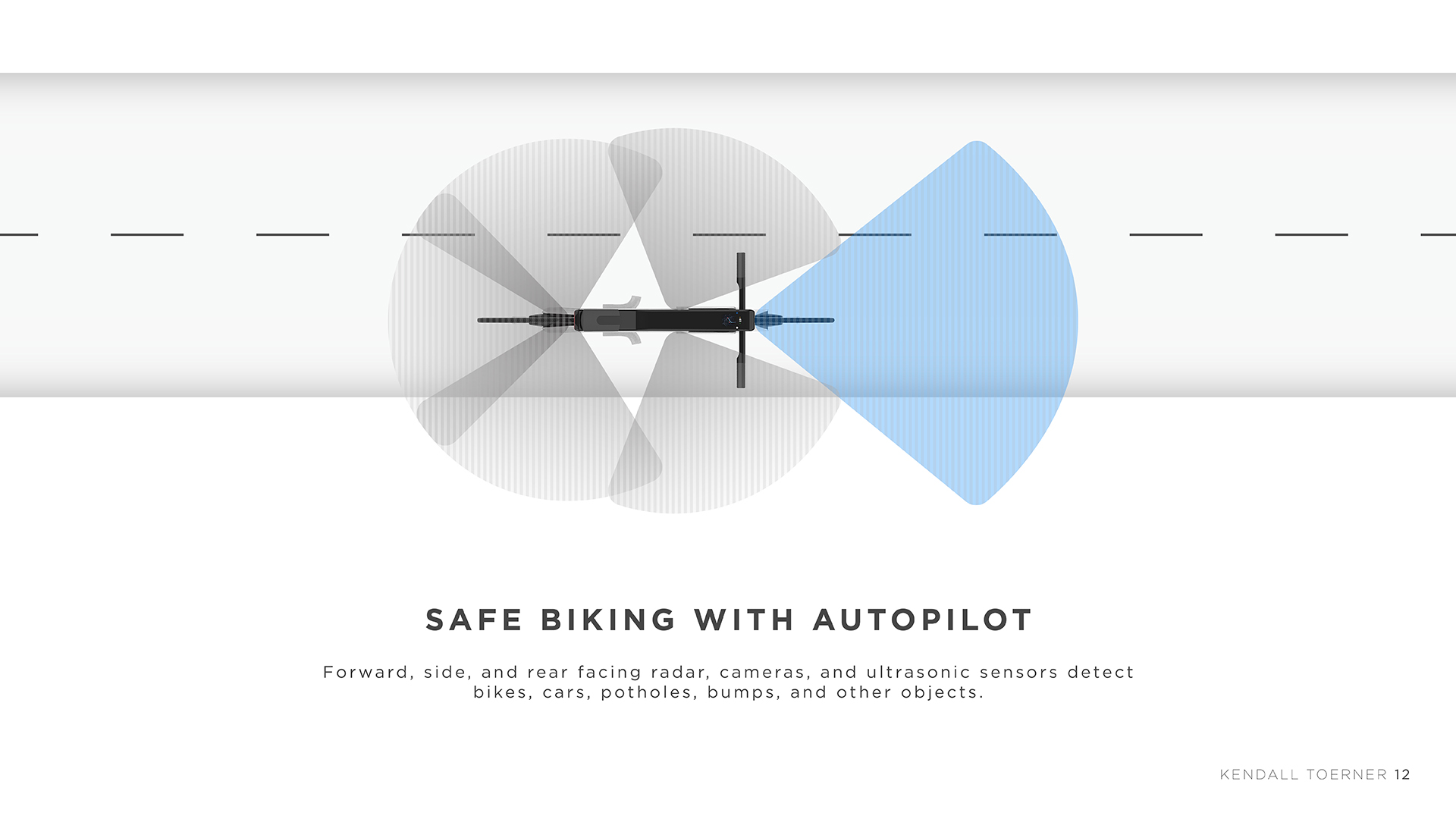
This, combined with dual drive hub motors in both the front and rear wheel which "apply power accordingly", allows the bike "full autonomy to get the user out of harm's way or guide them effortlessly to their destination."
Autonomous vehicles aren't new: self-driving cars have been making headlines for a while. However, in the case of cars, the driver's body has little input on the direction of travel, whilst even returning cyclists who haven't touched a handlebar since childhood might have trouble with the idea of a bike that unexpectedly swings left or right.

The other concern this raises is that the independently powered fork shaft relies upon power to keep it going. Without input it looks like the handlebars have little use aside from providing a useful drying rack for socks once all the radiators in your house have been exhausted. They're not connected to the front wheel, and therefore should you run out of juice, you'll not be able to turn.
A desire to avoid physical exertion also means that there's no pedalling involved, and no drivetrain whatsoever. If you're unfortunate enough to run out of battery when riding a traditional e-bike, you can still turn the pedals to get home. Not so here: if you run this out of battery it's akin to running out of fuel in your car. You're stranded and face a long walk to the nearest plug-in station (should a compatible one exist outside of your home).
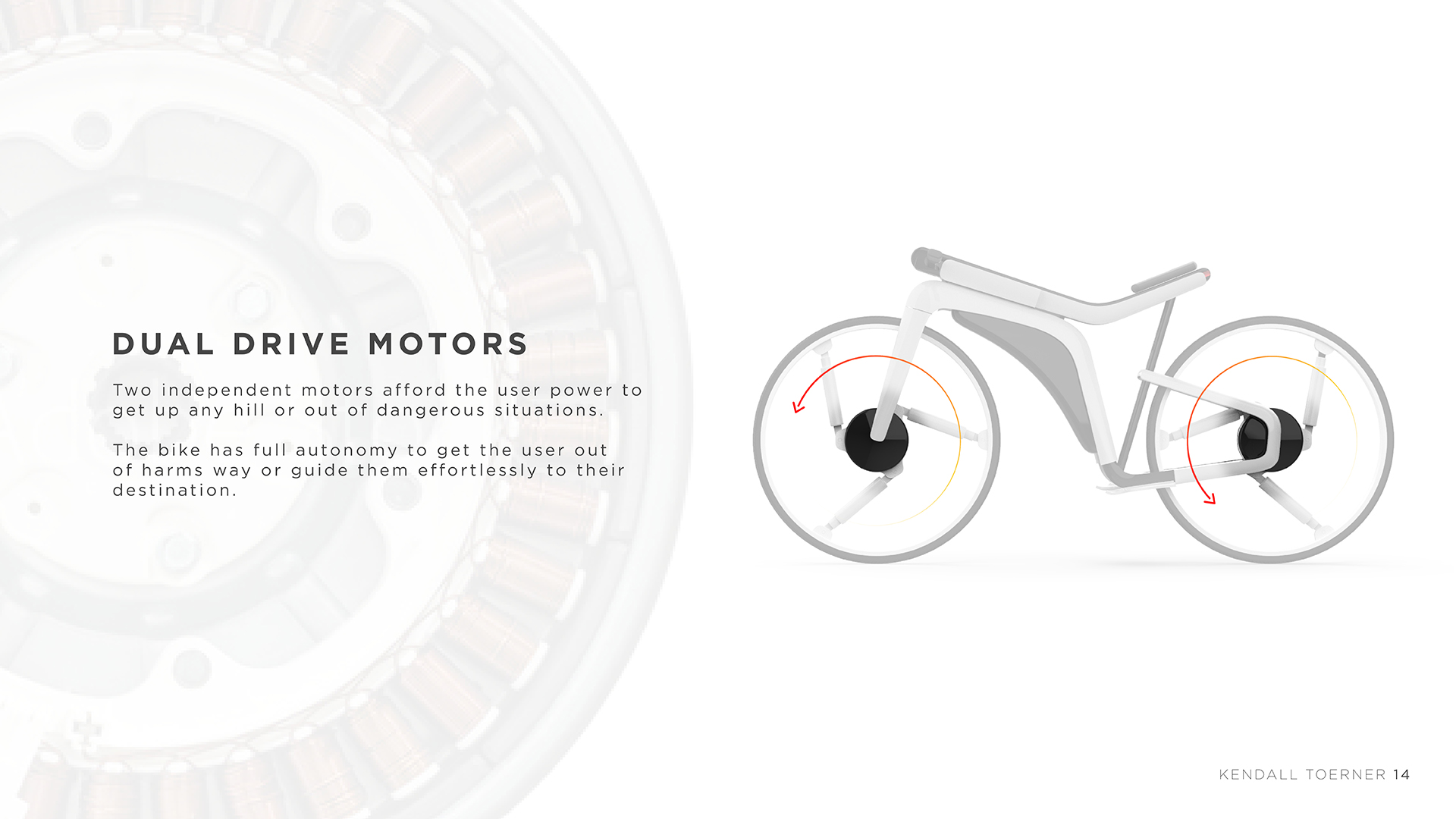
Being a concept at this point, of course these are design questions that might be answered should the bike go on to production. And there are some positives in there, too.
The three-strut suspension wheels offer a new(ish) take on road dampening, and it's very similar to tech which has been effectively aiding wheelchair uses via 'Softwheel' for some time. It's not clear what tyres the concept might run should it come to fruition, but Softwheels are seen running Schwalbe rubber so that seems like a workable option.
Urban and road bike industries have long been looking for a method of offering suspension without the 'boing' effect that we see on mountain bikes, case in point the Future Shock from Specialized, and this strut system offers another design to the party, albeit not a new one.
The integrated display, providing navigation and customisation is also a nice touch, and its similarity to the sleek creations of Silicon Valley's highest-profile outputs would no doubt offer familiarity and a magnetic draw to the bike that wired speedometers never could.
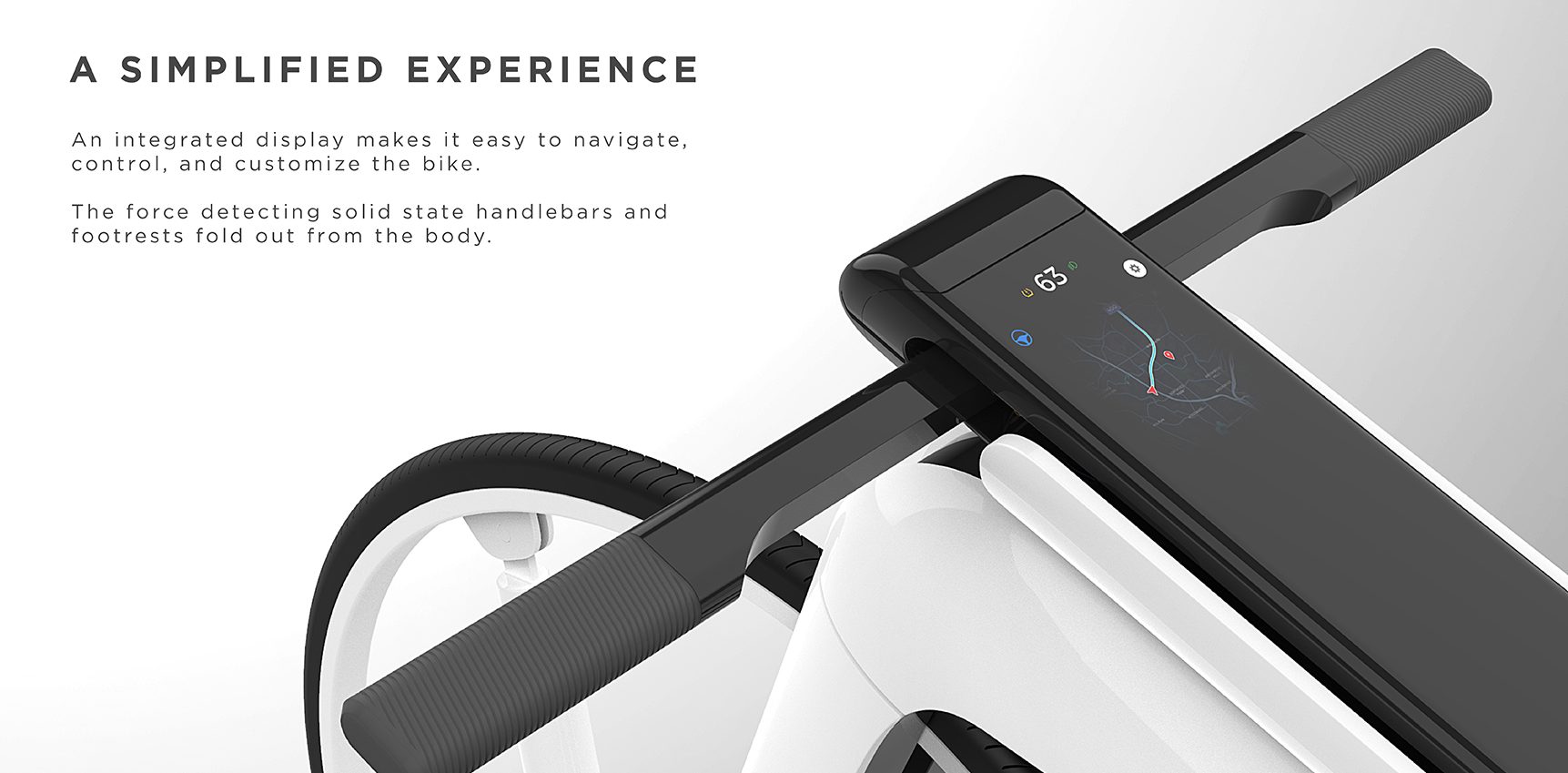
The Model B concept also draws from seating tech we've seen elsewhere, using what looks like a split nose saddle like those offered by ISM. These have divided opinion amongst hardened cyclists, largely on an aesthetic basis, but woven into this elegant (we assume) carbon-fibre construction the blood flow allowing perch fits in just fine.
However, with its steep downward tilt, a Model B rider may not be actually sitting on the saddle for long: the designer appears not have followed the lead of traditional bike and motorcycle saddles which are generally level, with the exception of Moto GP bikes which have a fuel tank to prevent the rider sliding forwards.
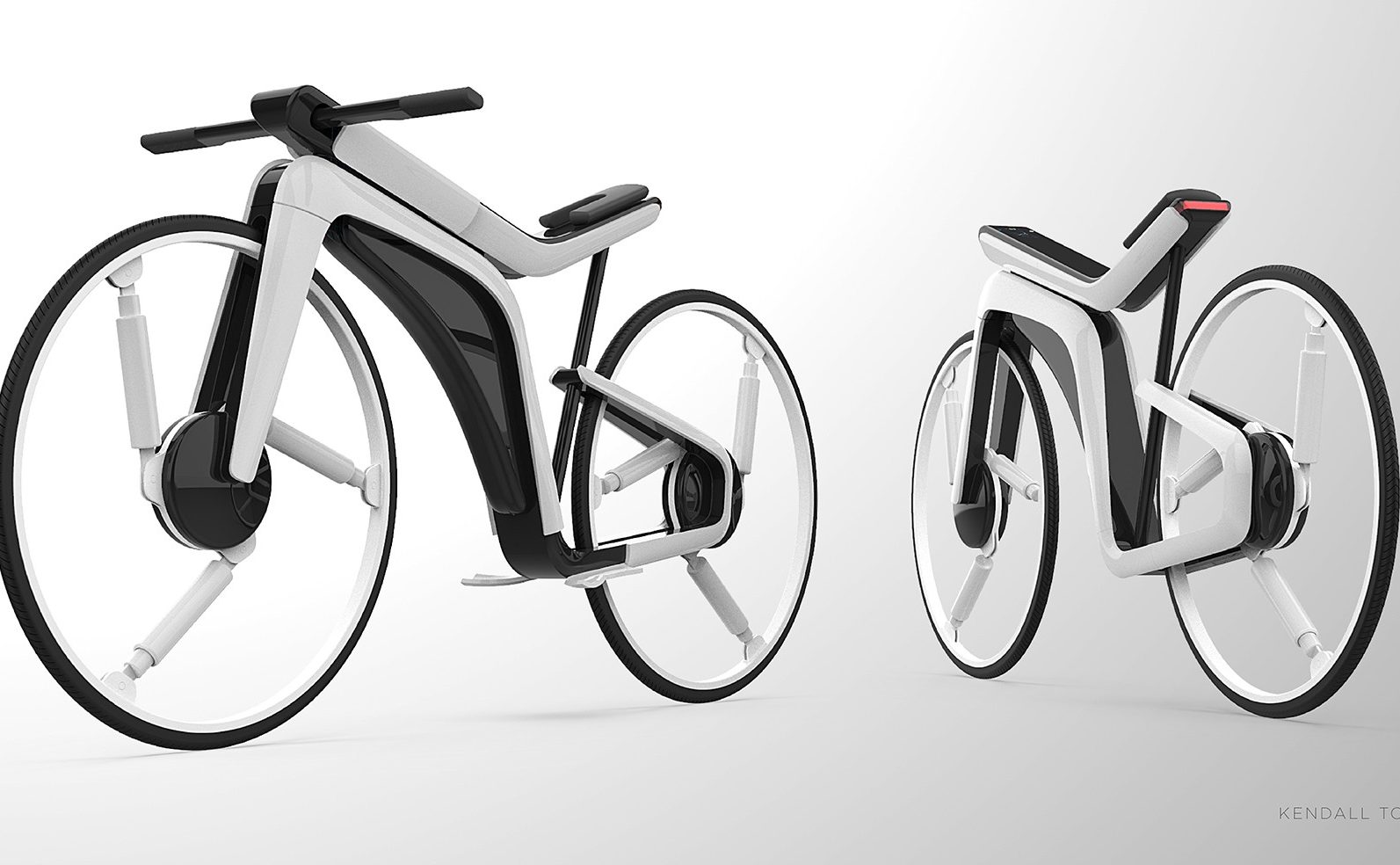
Concept bikes are concepts for a reason – not every element would make it to the drawing board where the product to be created for consumption. However, being free from the constraints of production allows for a little more freedom of imagination, which can breed inspiration.
If we were designing the Model B (which, we're not, for many good reasons) we'd drop the autonomous steering, maybe hook the sensors up to provide warnings on that very nice display – allowing the rider to react themselves – and fit some pedals. The suspension and split nosed saddle can stay.

Thank you for reading 20 articles this month* Join now for unlimited access
Enjoy your first month for just £1 / $1 / €1
*Read 5 free articles per month without a subscription

Join now for unlimited access
Try first month for just £1 / $1 / €1
Get The Leadout Newsletter
The latest race content, interviews, features, reviews and expert buying guides, direct to your inbox!
Michelle Arthurs-Brennan the Editor of Cycling Weekly website. An NCTJ qualified traditional journalist by trade, Michelle began her career working for local newspapers. She's worked within the cycling industry since 2012, and joined the Cycling Weekly team in 2017, having previously been Editor at Total Women's Cycling. Prior to welcoming her first daughter in 2022, Michelle raced on the road, track, and in time trials, and still rides as much as she can - albeit a fair proportion indoors, for now.
Michelle is on maternity leave from April 2025 until spring 2026.
-
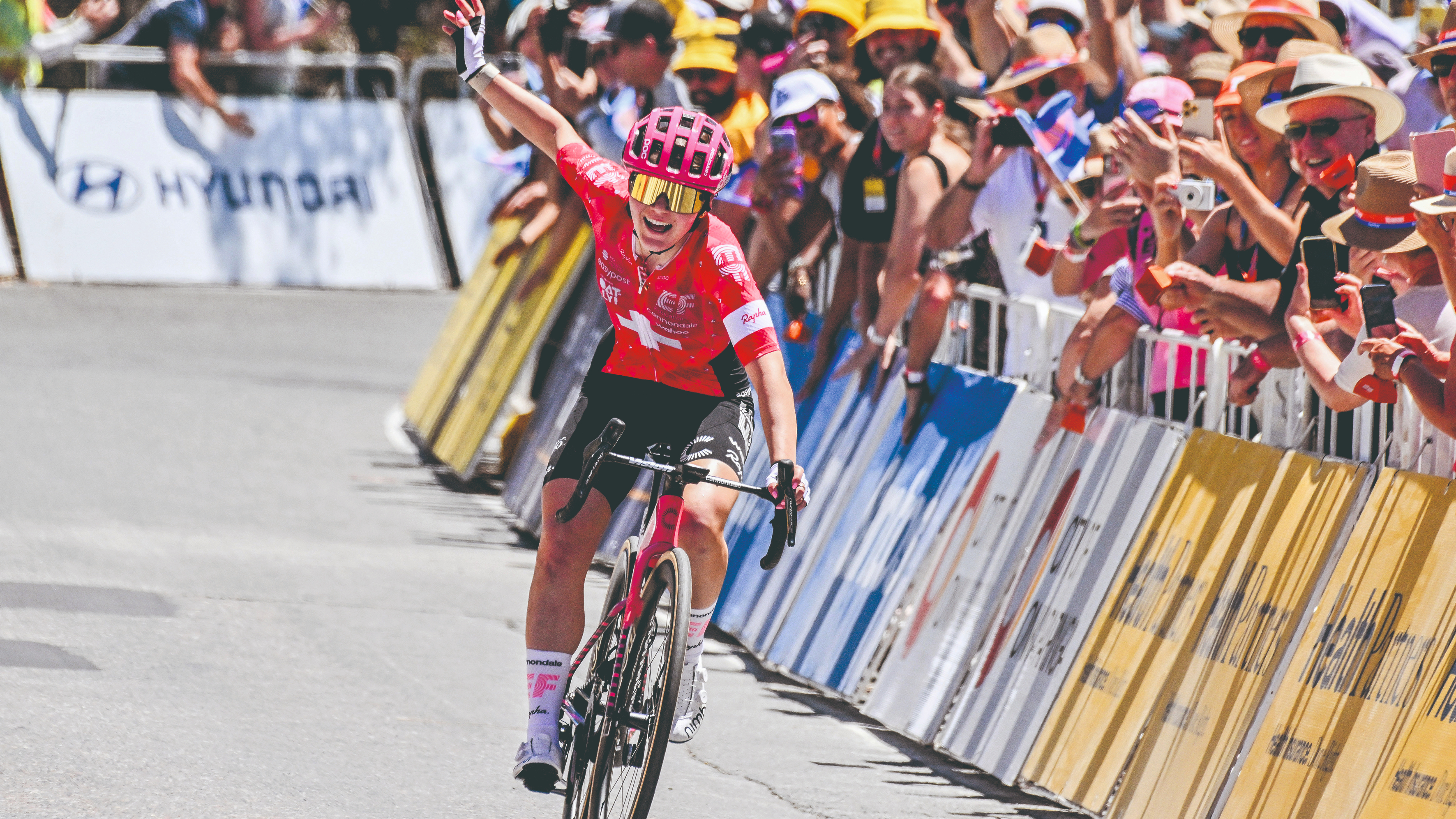 How do the pros train? Noemi Rüegg's 26 hour training week
How do the pros train? Noemi Rüegg's 26 hour training weekWinner of this year’s Tour Down Under, the EF Education-Oatly rider is a climber whose talent is taking her to the top
By Chris Marshall-Bell
-
 Save £42 on the same tyres that Mathieu Van de Poel won Paris-Roubaix on, this Easter weekend
Save £42 on the same tyres that Mathieu Van de Poel won Paris-Roubaix on, this Easter weekendDeals Its rare that Pirelli P-Zero Race TLR RS can be found on sale, and certainly not with a whopping 25% discount, grab a pair this weekend before they go...
By Matt Ischt-Barnard